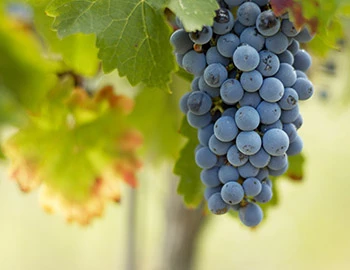
Pauillac de Latour 2019
AOC Pauillac, 3ème vin du Château Latour, 375 ml

| Grape variety: | Cabernet Sauvignon, Merlot, Petit Verdot |
| Producer: | Château Latour |
| Origin: | France / Bordeaux / Pauillac |
| Other bottle sizes: | |
| Other vintages: |
Description
Citing Robert Parker The Wine Advocate (William Kelley) "The 2019 Le Pauillac de Château Latour is another impressive rendition of this bottling from Latour. Offering up notes of sweet berry fruit, plums, spices and pencil shavings, it’s medium to full-bodied, rich and fleshy, with a ripe core of fruit, lively acids and powdery tannins. This year, it includes some declassified lots from Les Forts de Latour. I'm sure it will show even better when it's released in a few years."
Attributes
| Origin: | France / Bordeaux / Pauillac |
| Grape variety: | Cabernet Sauvignon, Merlot, Petit Verdot |
| Ripening potential: | 6 to 12 years |
| Drinking temperature: | 16 to 18 °C |
| Volume: | 13.5 % |
| Note: | Contains sulphites |
Petit Verdot
Bordeaux’s secret weapon
It is commonly said that the Petit Verdot originated in Bordeaux. But genetically, it is closer to a group of vines from near the Pyrenees, which are most likely descended from wild clematis. In French, these wild plants are called “lambrusques”, and the Petit Verdot is also known under the synonym Lumbrusquet. It is a high quality grape: very dark and spicy with notes of cassis and graphite, plenty of robust tannins and strong acidity. Most major Bordeaux contain a small proportion of Petit Verdot. Appropriately, it is valued wherever wines are produced according to the Bordeaux recipe. For example, in Italian Maremma or in California, where it covers the largest area worldwide. It is almost never vinified purely by itself. Incidentally, its name, derived from “vert”, meaning green, alludes to its Achilles heel: in cool weather it tends to form small, seedless green grapes.

Cabernet Sauvignon
The backbone of Bordeaux
The Cabernet Sauvignon gives the Bordeaux its backbone, yielding deep violet wines with powerful tannins and endless ripening potential. It is the top dog in Médoc, and is placed in all five premier crus of Bordelais. When young, it often appears strict and unapproachable, but with advancing years, its tannins round off. It is wonderfully velvety, and yet always maintains its freshness. Typical flavours include cassis, graphite and cedar. Wherever Cabernet Sauvignon is found, Merlot is not far away. It complements the robust structure of Cabernet with softness, fruit and richness. The Cabernet Sauvignon is the most-exported vine in the world. It delivers persuasive qualities in Italy as an ingredient of the Super Tuscan, or as the flagship variety from California. There, it is lovingly titled “Cab Sauv”. Meat fans should be aware that it fantastically accompanies a grilled entrecôte. The family tree of Cabernet Sauvignon is surprising: its parents are Cabernet Franc and the white Sauvignon blanc.

Merlot
Everybody’s darling
Merlot is the most charming member of the Bordeaux family. It shines with rich colour, fragrant fullness, velvety tannins and sweet, plummy fruit. It even makes itself easy for the vintner, as it matures without issue in cool years as well. This is in contrast to the stricter Cabernet Sauvignon, which it complements as a blending partner. Its good qualities have made the Merlot famous worldwide. At over 100,000 hectares, it is the most-planted grape in France. It also covers large areas in California, Italy, Australia and recently in Eastern Europe. The only catch is that pure Merlot varieties rarely turn out well. Its charm is often associated with a lack of substance. Only the best specimens improve with maturity. They then develop complex notes of leather and truffles. This succeeds in the top wines from the Bordeaux appellation of Pomerol and those from Ticino, among others.

Pauillac
Pauillac: Aristocratic crus
No appellation embodies the noble Bordeaux virtues on such a fine, almost majestic level as Pauillac, the peninsula resting in the Médoc. With Lafite-Rothschild, Latour and Mouton-Rothschild, it is also home to the majority of the five premier crus. The grandeur of Pauillac crus is quite clearly based on the Cabernet Sauvignon variety, which, with a share of over 70 percent, certainly dominates in assemblages, and also lends the wines excellent aging potential.

France
France – Philosophy in a bottle
According to French philosophy, wine should be an expression of the soil and climate. They use the word “terroir” to describe this. Terroir makes every wine different, and many especially good. French wine is regarded worldwide as an expression of cultural perfection. The French believe that humans are responsible for the quality of the berries, the vine variety for their character, and nature for the quantity. This philosophy can be expressed succinctly as: “the truth is the vineyard, not the man.”


